Global jobs growth remained muted in August, according to PMI survey data. Job gains were largely limited to the emerging markets, where jobs growth hit a 12-year-high. Developed world job growth, in contrast, slowed to near-stagnation.
Employment growth has cooled especially sharply in the US and Europe in recent months, having enjoyed a revival earlier in the year amid resurgent demand for services.
However, an increasingly steep rate of order book decline recorded across the developed world hints at labour markets continuing to lose further strength in the months ahead.
While adverse for economic growth prospects, the cooling labour markets are good news in the fight against inflation.
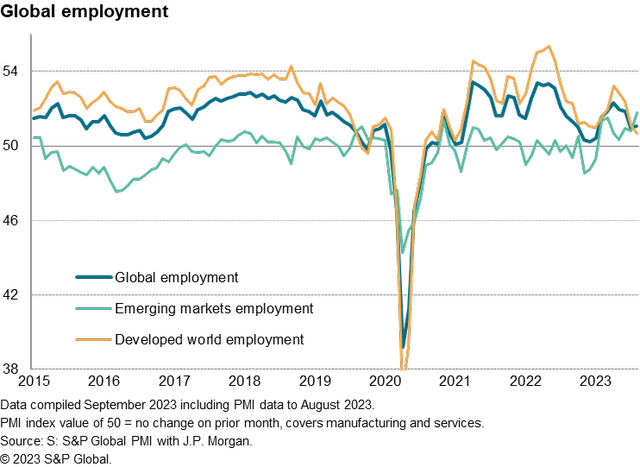
Emerging-developed world job market divergence widens
Global employment growth held steady in August, according to the latest PMI survey data, continuing to run at the weakest rate since January and registering only very modest job gains. The rate of increase has moderated since the peak recorded back in April 2022.
There was a growing divergence, however, between labour markets in the emerging markets and the developed world.
While the former saw the steepest jobs growth since May 2011, only modest jobs growth was recorded across the developed world, the rate of increase dropping to its lowest since the COVID-19 lockdowns at the start of 2021.
The near-stagnation of developed world jobs growth represents a major contrast to the strong job gains seen throughout much of the two-and-a-half years prior to the summer.
Drilling deeper, a near-record gain in emerging market service sector employment was accompanied by the largest monthly rise in manufacturing payroll numbers since May 2011.
Developed world manufacturing jobs meanwhile came close to stagnating, registering the weakest rise since the sector began taking on more staff again in December 2020.
Developed world service sector job gains also slowed, having been the main driver of the global jobs market earlier the year, dropping to the lowest since early 2021.
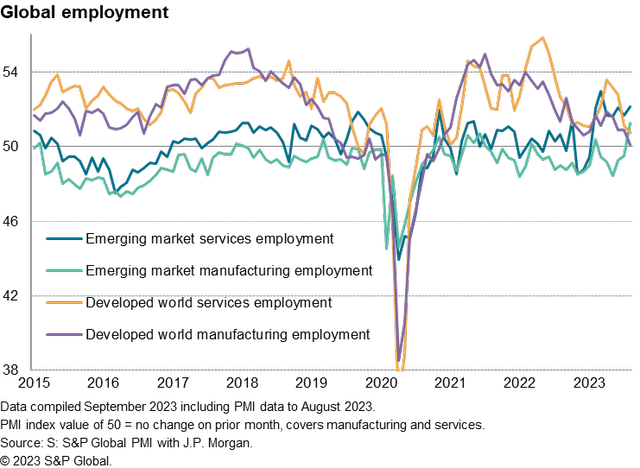
Jobs growth cools to register only modest gains in the US and Europe
Especially modest job gains were seen in the US and Europe during August. Jobs growth slowed in the US to the joint-lowest since the labour market recovery began in July 2020, and hit the lowest in the eurozone since the upturn started in February 2021, led by a steep decline in Italy.
The UK meanwhile saw the smallest rise in employment for five months thanks to a sharp decline in factory jobs.
In contrast, jobs growth accelerated in Japan, mainland China, Brazil, India, Australia and Russia.
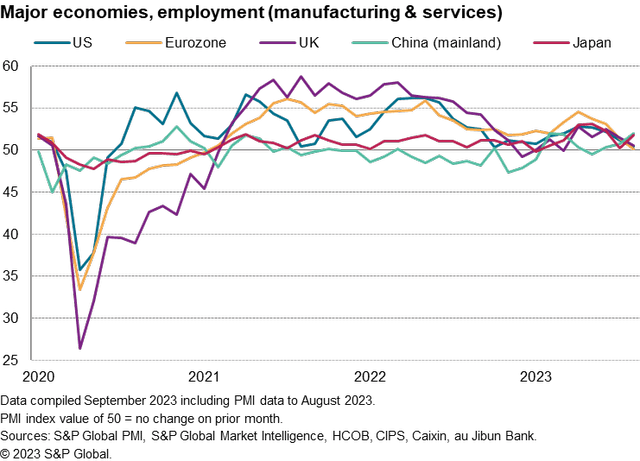
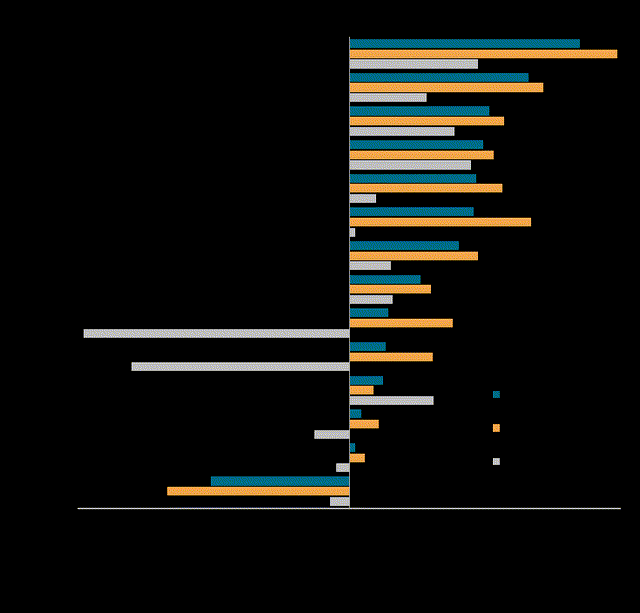
Deteriorating backlogs of work add to near-term risks
Looking ahead, a reduction in developed world companies’ backlogs of work hints at a possible flatlining or even contraction of payrolls as firms adjust to lower capacity requirements.
Backlogs of uncompleted orders fell in the developed markets at a rate not seen for 14 years in August if the early lockdown months of 2020 are excluded.
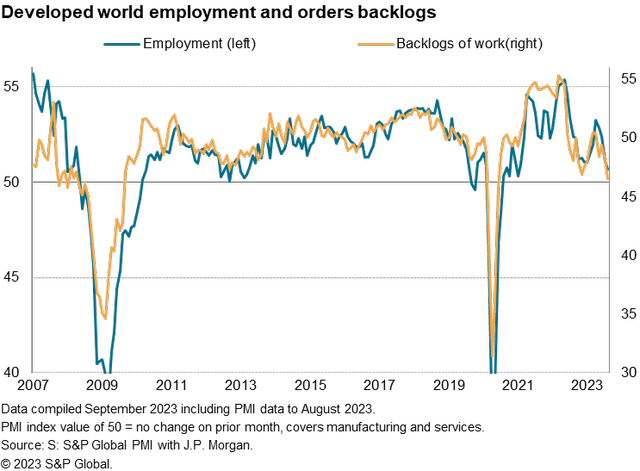
Similarly, the PMI survey Comment Tracker data, which analyses the reasons cited by survey participants globally for changes in key variable, found demand to be acting as an increased drag on employment.
The number of companies reporting that jobs had been created due to rising customer demand fell in August to the lowest recorded since the global financial crisis in 2009 barring only the initial months of the pandemic in 2020.
In the service sector, it was the lowest since the Brexit referendum in 2016 if the pandemic is excluded.
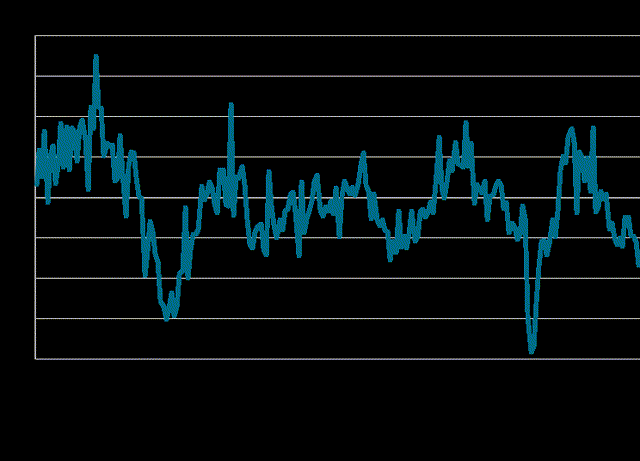
Cooler labour markets bode well for inflation
Any such further weakening of developed world job market in particular will be welcomed by policymakers, who are keen to take the heat out of wage growth.
A deep dive into the reasons given by PMI contributing companies around the world found that rising wage costs were again the most common cause of rising prices in August, albeit exerting the least upward pressure since March.
In theory, a weakening of labour demand will subdue wage bargaining power further in the months ahead.
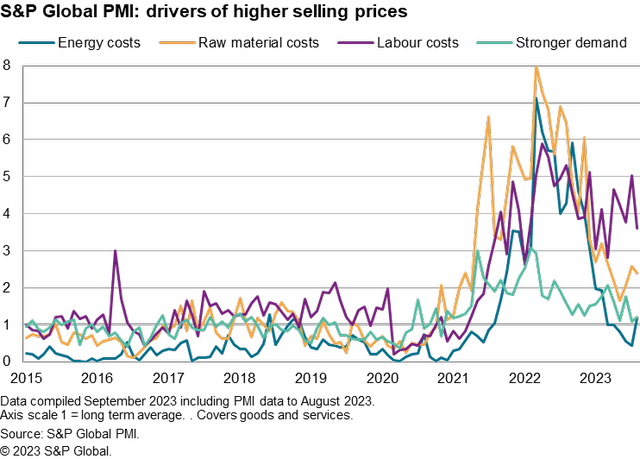
Upcoming survey data will therefore need to be closely eyed not just for the output and price trends, but also for labour market developments.
Original Post
Editor’s Note: The summary bullets for this article were chosen by Seeking Alpha editors.
Read the full article here












Leave a Reply